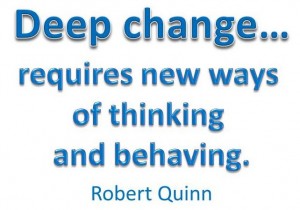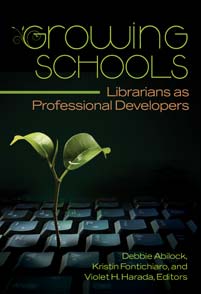Maximizing School Librarian Leadership: Building Connections for Learning and Advocacy was published by ALA Editions in June, 2018.
Chapter 2: Job-Embedded Professional Development
“A team is not a group of people who work together. A team is a group of people who trust each other” (Sinek, Mead, and Docker 2017, 104).
Professional learning embedded in the everyday practice of educators is an effective way to transform teaching and learning. In this model, school librarians can serve as professional learning leaders. They enact this role in a number of ways: through providing formal staff development; by serving as a member or team leader in one or more professional learning communities (PLCs); and through classroom-library collaboration, which involves trusting colleagues in coplanning, coteaching, and coassessing learning outcomes.
While all of these contributions to professional learning are important, collaboration for instruction gives school librarians the optimum opportunity to learn with and from their colleagues. Coteaching is personalized learning for educators. It is aligned with adult learning theory that puts educators in the driver’s seat—controlling the content and context of their learning while they solve self-identified instructional problems.
Planning for instruction is teacherly work. It requires connecting curricula with students’ interests and motivation and making learning experiences relevant. It involves determining goals, objectives, and assessments. It includes identifying compelling resources and effective instructional strategies. Through the hands-on implementation of coplanned lessons or units, educators monitor student learning and the success or areas for improvement in their instruction.
What you will find in this chapter:
1. A Rationale for Coteaching as Effective Job-Embedded Professional Development;
2. A Description of Classroom-Library Coteaching Approaches;
3. A Levels of Library Services and Instructional Partnerships Matrix;
4. An Explanation and Application of the Diffusion of Innovations Model:
5. A Coplanning and Coteaching Self-assessment Instrument.
Coteaching offers educators the opportunity to hone their craft while teaching “actual students in real time, with the taught curriculum, available resources and tools, and within the supports and constraints of their particular learning environments” (Moreillon 2012b, 142). School librarians add value when they co-collect evidence (student learning outcomes data) to demonstrate the effectiveness of their teaching in terms of what is important to colleagues and administrators. Data points the way toward continuous instructional improvement. Coteaching also creates the opportunity for school librarians to co-lead in a culture of adult as well as student learning in their schools.
Works Cited
Moreillon, Judi. 2012. “Job-embedded Professional Development: An Orchard of Opportunity.” In Growing Schools: School Librarians as Professional Developers, edited by Debbie Abilock, Kristin Fontichiaro, and Violet Harada, 141-156. Santa Barbara: Libraries Unlimited.
Sinek, Simon, David Mead, and Peter Docker. 2017. Find Your Why: A Practical Guide for Discovering Purpose for You and Your Team. New York: Penguin.
Image Credit: Word Cloud created at Wordle.net
